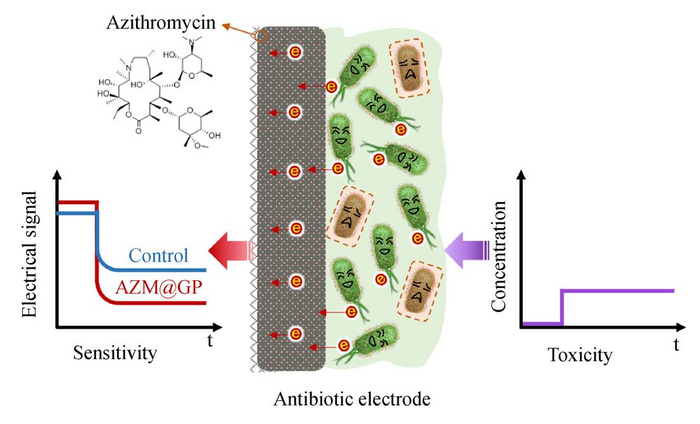Reviewed by Mila PereraSep 15 2022
Water quality monitoring is regarded as an effective measure to ensure water safety as it raises alerts for incoming pollutants and provides real-time information online. Out of all the environment monitoring technologies, biosensors are a stand out due to their capacity to establish the biological impacts of pollutants. They have thus attratced a huge amount of attention recently.

Image Credit: Shuyi Wang, Xiang Qi, Yong Jiang, Panpan Liu, Wen Hao, Jinbin Han , Peng Liang
In the past two decades, biosensors based on electroactive biofilm (EAB) have been thoroughly examined as they facilitate practical water quality early warning where most pollution events are unpredictable and demonstrate a complete and rapid response toward several types of substances. The latest progress has highlighted that a biosensor with high sensitivity has huge value on water quality monitoring, which is considered an essential metric for the EAB-biosensors performance.
Many attempts have been made to enhance the sensitivity via regulating the operation condition of EAB-biosensors. These include the adjustment of external resistance, applying potential and current, employing transient state or open circuit mode, and enhancing mass transfer between the biofilm and influent, as well as through the modification of EAB and regulation on its microbial community by adding signal molecules.
These regulation technologies, however, are not suitable for real-time engineering applications and are restricted to particular cases, which leads to a lack of practicality. For instance, antibiotics have also been utilized as the agonist owing to the promoted enhancement of electroactive microorganisms (EAMs) and the fine-tuning of gene expression.
Nevertheless, soluble species were the general antibiotics used in the latest studies, which were not suitable or environmentally friendly for water environment monitoring due to the nonstop flow of feed water. This led to the immediate requirement for insoluble antibiotics to enhance EAB's sensitivity for real-time engineering applications.
Hence, with the intent of fine-tuning the biofilm thickness and microbial community of EAB to improve the EAB-biosensor’s sensitivity, the scientists from Tsinghua University, Fujian Agriculture and Forestry University, and Zhengzhou University utilized graphite powder (GP) with azithromycin (AZM) - a type of insoluble antibiotic - to make a new AZM@GP composite electrode and to function as the EAB-biosensor anode. This study was published online in Frontiers of Environmental Science & Engineering in 2022.
AZM, a type of insoluble antibiotic, belongs to the macrolides group and institutes a key in-vitro antibacterial activity against aerobic Gram-negative bacillus and Gram-positive cocci. In this research, the new AZM@GP composite electrode employed as the EAB-biosensor anode can impact the biofilm to regulate the microbial community and morphology of EAB, eventually providing stimulated sensing performance.
The team examined the impacts of enhancement on biosensor sensitivity with various antibiotic dosages. EAB-biosensor was found to mainly profit from the correct dosage of AZM (0.5% AZM@GP).
This was illustrated by a decreased start-up time, more readable electrical signal, relatively higher voltage output, and higher inhibition rate (30–65% more than the control sensor with GP electrode) while coming in contact with toxic formaldehyde. This may be credited to the fact that AZM slowed the non-EAM growth without much effect on the metabolic or physiologic activities of EAM in the advised dosage.
Azithromycin was discovered to increase the relative abundance of Geobacter and control the thickness of electroactive biofilm. Further studies of the biofilm morphology and microbial community examination recommended that the biofilm formation was optimized with decreased thickness and enhanced Geobacter with 0.5% AZM@GP dosage.
A novel electrode applied in the EAB-biosensor was developed in this study. Contrary to the traditional method, this electrode employed the insoluble antibiotic as the agonist. The antibiotic was suitable and environmentally friendly for water environment monitoring with a nonstop flow of feed water in real-time. This new electrode can be equipped and fabricated easily and thus appears to be a promising method for the facilitation of the practical application of EAB-sensors.
Journal Reference:
Wang, S., et al (2022) An antibiotic composite electrode for improving the sensitivity of electrochemically active biofilm biosensor. Frontiers of Environmental Science & Engineering. doi.org/10.1007/s11783-022-1518-7.